
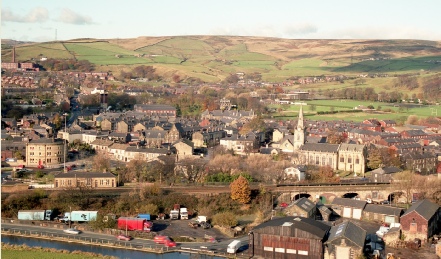
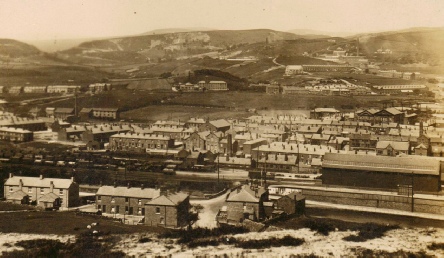
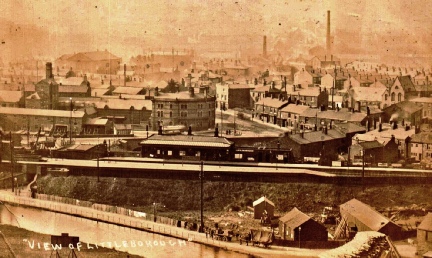
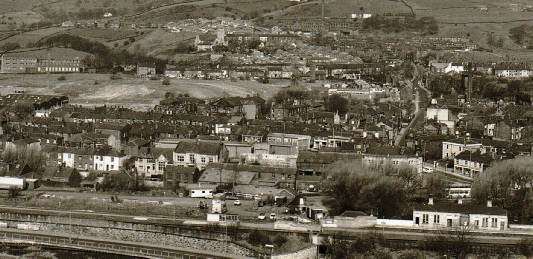


Street Trams in Littleborough
Use the links below to aid your reading
LINE OF ROUTE IN LITTLEBOROUGH
Like in other towns Rochdale’s tramways closed largely due to the lower costs and greater convenience of buses which could reach recent housing estates and outlying districts. Years later trams returned to Rochdale but Metrolink is unlikely to be extended to Littleborough. With the UK Government legislating to reduce CO 2 emissions by 2050 then perhaps an electrified railway may well reach Littleborough.
The first horse drawn tram operated in Birkenhead in 1860 with steam trams operating from the 1880s. In 1885 Blackpool became the first tram operator in Britain to use electricity. The majority of tramways operated on a gauge of 4ft 8½ inches. An onerous requirement of tramway legislation was that tramway operators were responsible for the road surface both between the rails and 18 inches either side notwithstanding the fact that except with early horse tramways, trams did not wear out the road surface.
In Rochdale, tramways were authorised by legislation in 1881 and 1882 with construction of the largely single track routes commencing in July 1882. Rochdale started with steam trams operating on Narrow Gauge tracks with a gauge of 3 ft 6 inches. The steam trams consisted of a fully enclosed steam engine which hauled a double-deck twin bogie passenger vehicle, many fitted with a roof with windscreen at either end; the roof providing weather protection as well as some protection from the smuts emitted by the steam engine. The first public steam tram operated by the Manchester, Bury, Rochdale and Oldham Steam Tramway Co Ltd left Rochdale left Rochdale for Littleborough on 7th May.1883. The normal service was 2 trams per hour in each direction. In 1884, the Littleborough Local Board discussed the difficulties arising from the trams terminating on Church Street, Littleborough, outside the Parish Church of the Holy Trinity and considered whether it would be better for them to continue to either Gale or Summit. Nothing happened but when electrified the electric trams did indeed operate to the Summit Inn. As allowed for in the legislation Rochdale finally took over from the Manchester, Bury, Rochdale and Oldham Steam Tramway Co Ltd in May 1905. The last Steam trams to Littleborough operated on 11th May 1905.
The conversion from steam to electric was rapid and clearly involved numerous preparations to replace the old rails at 3 ft 6 inches gauge with tracks to the standard gauge of 4ft 8 ½ inches. The tracks were laid on a six inch concrete base topped off by Granite Setts for the street surface (which did not delineate the 18 inches either side (see earlier)). This remarkable achievement achieved by manpower during 1905 shames the time taken to convert the Rochdale to Oldham and Manchester railway line from heavy rail to Metrolink (2 years plus) some 100 years later.
The first Electric tram to Littleborough ran on 29th May 1905, just over 2 weeks after the last steam tram . The Rochdale electric trams took power from overhead wires supported by poles. On the Littleborough route Littleborough Urban District Council owned the tramway track and overhead equipment from its boundary with Wardle to Summit and the Square but Rochdale provided the vehicles and the electricity.
The route to Littleborough eventually provided a 10 minute service operating via John St/Halifax Rd or via Entwisle Road. The fare from Rochdale to Littleborough was 4d. Just 2½ months later the first Electric Tramcar ran from Littleborough Square to Summit on 12th Aug 1905. Trams to summit operated every 30 minutes at a fare for the total journey of 2d. Passengers boarded the electric cars at designated ‘stages’ marked with stop signs. These often corresponded with the passing places and stop locations are often still used by the buses of today (2021)
See Buses for Todmorden Corporation’s service to Summit and the development of local bus services in Littleborough in the 1920s. Rochdale Corporation was late in gaining powers to run buses - obtained in 1925. Once Rochdale had acquired these powers the need for heavy work on replacing tramway infrastructure came into prominence with the result that the decision was taken to replace the trams with a fleet of modern buses. On 19th October 1930 Rochdale Corporation buses replaced trams on the Rochdale to Littleborough and Summit service. In 1932 Tram tracks removed from Littleborough Square and elsewhere. The overhead line support poles lasted much longer as they were used for street lighting often out of plumb due to not having to support the weight of the overhead wires.
LINE OF ROUTE IN LITTLEBOROUGH
The tram tracks followed the main road from the district boundary at the top of Halliday Lane (now Smithy Bridge Road) and continued along the recently de-Turnpiked New Road past Dearnley Chapel(s) to Stubley and then down the brow to Whitelees Road junction. From there the tram tracks went via Featherstall before climbing the hill into Littleborough. In steam tram times, the tracks terminated in Church Street next the entrance to the Holy Trinity (Parish Church) churchyard. There was a loop here to enable the tram engine to run around the passenger trailer so it was always at the front.
When the line was rebuilt and electrified the route remained the same except that the trams enjoyed a double track section from the Queens Hotel in Littleborough into the square where the trams terminated. A triangular junction enabled cars to operate direct to Summit whilst allowing the Summit service cars to run mainly into the square. The line terminated with two tracks outside the Summit Inn.
For the benefit of passengers a tram shelter was erected in the square. This remained for many years, at least until the late 1980s , one of the few reminders of how the trams conveniently served the people of Littleborough, a role taken over by bus services.
ACKNOWLEDGEMENTS
Many thanks to Tony Young and his book “Tramways in Rochdale” which has provided valuable material for this paper. Also to the ‘Light Rail Transport Association’ who published Tony’s book and are joint copyright holders.
Get Tramways in Rochdale from George Kelsall’s bookshop in the square
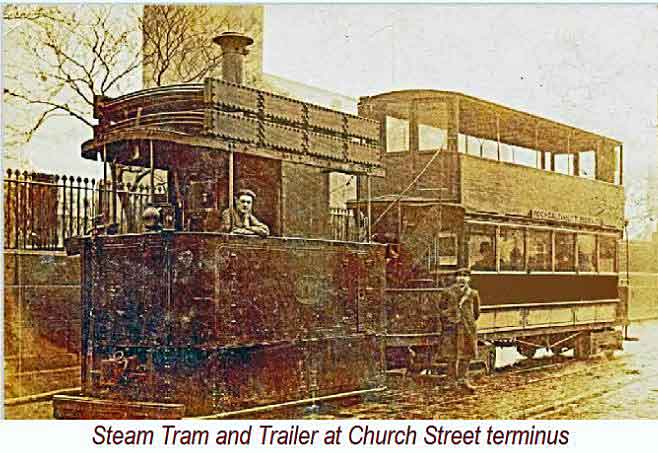
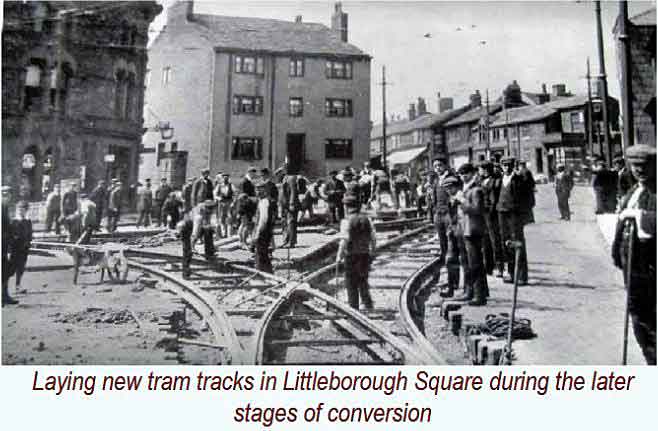
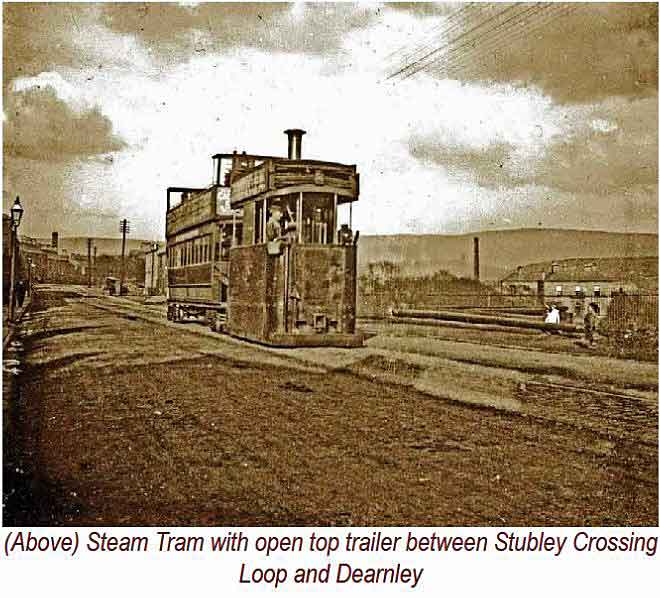
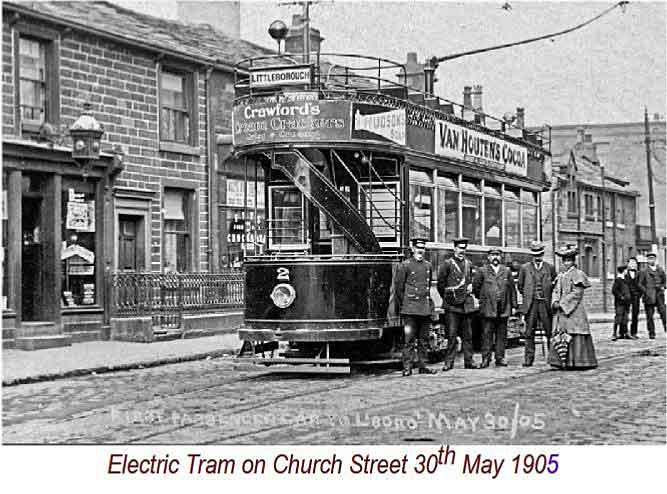
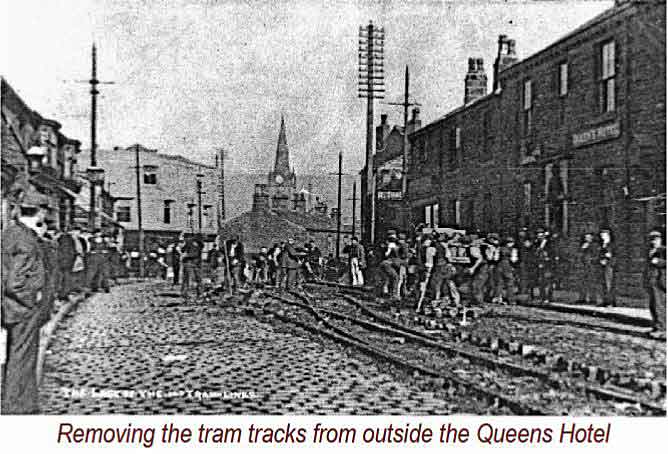
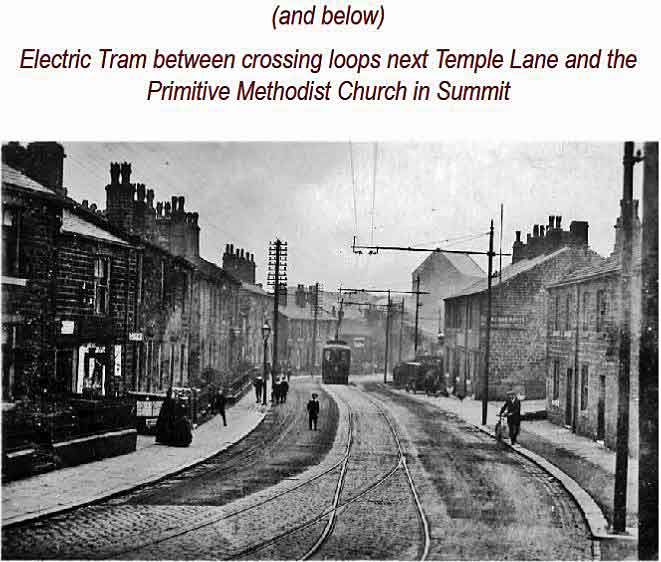
| Contact Us |
| Rechabites |
| Early Schools |
| Non-conformist schools |
| C of E and RC Schools |
| Board and Local Authority Schools |
| Richard Jay - Coach Operator |
| William Burrill |
| Richard Jay Haukier |
| Leach - Cycles to Haulage |
| H M Sutcliffe |
| J Grindrod & Son Ltd |
| R Rudge and Son Ltd |
| Canal Restoration |
| Clegg Hall & Smithy Bridge |
| Railways in Littleborough Centre |
| Littleborough Viaduct to Summit Tunnel |
| Summit Tunnel |
| Industrial Railways |
| Blackstone Edge Turnpike |
| Calderbrook Turnpike |
| Doghill to Steanor Bottom Turnpike |
| Todmorden Rd TP |
| Toll Roads |
| Industrial Histories |
| History Trails |
| Littleborough Book |
| Pubs & Inns |
| Co-op - Early Grpwth |
| Coop - Central Premises & Competition |
| Coop in 20th Century |
| Coop Decline & Change |
| LANCTAN |
| Schofield Iron Woks |
| Phoenix Iron Works |
| Clegg's Shore Mills |
| Consterdine textile Mills |
| Schofield Textile Mills |
| Rayon (Artificial Silk( Manufacture |
| Mills |
| Deanhead Chemical Works |
| Akzo Chemical Works |
| Starring Pottery |
| Summit Brickworks |
| Tetlows Pottery |
| Whittaker Pottery |
| Coal Mining Map |
| Starring Clay and Coal Mine |
| Cleggswood Colliery |
| Mining around Hollingworth |
| Shackleton - Coal Merchant |
| Possible Roman Littleborough |
| Blackstone Edge Roman Road |
| Roll of Honour |
| WW2 Heroes |